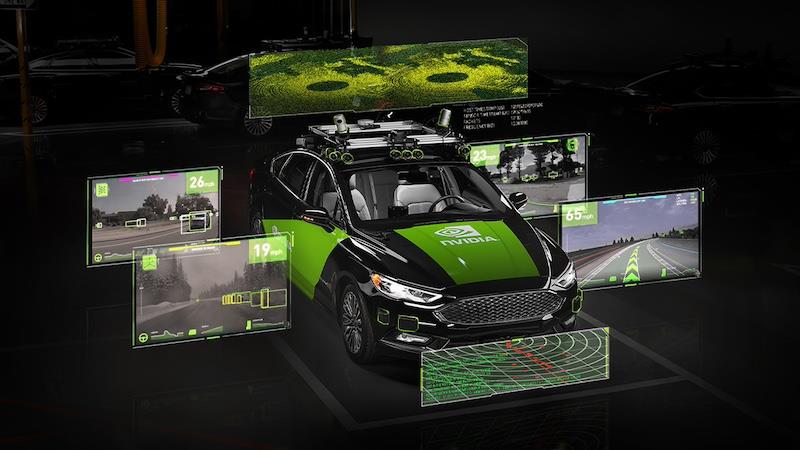
How Nvidia Conquered The Digital World And Plans To Dominate The Robotics Industry
January 7, 2025 by Mark Allinson
There was a time when it was difficult to see beyond Intel. It was indisputably the world's largest chipmaker for a long time and eclipsed whoever else was around at the time. For some people, no other semiconductor manufacturer even existed.
Intel's partnership with manufacturers of computers that ran the Windows operating system was largely responsible for the global success of the company whose unofficial motto was“Only the paranoid survive”.
But perhaps the total and utter domination of the market, and the falling away of would-be competitors into niche markets, led Intel to be less paranoid and get more relaxed – perhaps even complacent.
There's no threat to Intel's survival at all. It's still a massive company. But it's no longer the top dog in a landscape that has changed many times beneath it and around it.
Nvidia, which used to be a niche player and a favourite of the games market because of its prowess in the graphics field, is now the world's largest chipmaker by market capitalisation.
Its route to the top started with its strong position in the graphics processing unit (GPU) market. This enabled the company to capitalise on the explosion of AI, data centres, and high-performance computing, all of which required powerful chips like the GPUs Nvidia was producing.
Although it's not something Nvidia likes to emphasise, the company's chips became essential equipment – almost like drugs – for addicts of cryptocurrency mining. The bitcoin boom created sudden and huge demand for GPUs a couple of years ago.
Nvidia seemed reluctant to be associated with what was reported in the media as though it was a slightly seedy market or almost illegal at the time. And it probably considered not supplying bitcoin miners at all, but that's a difficult thing to do – how do you know who's buying and re-selling your products? Not possible.
Anyway, that slight pseudo-controversy is over because most people now accept that cryptocurrencies are here to stay, whether we like it or not, or whether we make money from it or not. They're no longer considered an existential threat to the mainstream financial system.
Now, Nvidia is looking to less controversial – if unproven – markets for the next stage of its growth. Robotics is a big part of it, or at least autonomous systems are.
Indeed, if CEO Jensen Huang's speech at CES on Monday is anything to go by, Nvidia is looking to widen the gap between itself and other chipmakers through the robotics sector, primarily through autonomous vehicles.
At the moment, robotics accounts for a relatively small amount of the $113 billion annual revenue for Nvidia. According to the Financial Times , the automotive and robotics sector earned Nvidia a total of $449 million for the quarter ending October last year.
Times that by four and you get around $1.8 billion revenue for both those segments for the whole year. Then halve it (arbitrarily) to estimate the non-automotive robotics revenue and you get $900 million.
So, less than a billion dollars from robotics per year, and that's probably an over-estimation because automotive is almost certainly a much bigger earner than robotics for Nvidia.
But Huang, and many others, do believe robotics will grow at a fast rate over the next few years. And remember, the automotive sector is almost indistinguishable from robotics because autonomous cars – in which Nvidia has a powerful market position – are basically robots on wheels.
Huang himself blurred the lines between automotive and robotics in his CES speech to say autonomous vehicles“will be the first multitrillion-dollar robotics industry”, adding that Nvidia expects its automotive revenues to reach $6 billion in the 2026 fiscal year.
The speech also included the announcement that Toyota has opted to build its next generation of autonomous vehicles on the Nvidia Drive AGX – a hardware and software platform that has become the first choice for most developers of these technologies.
So what of Intel in the meantime? Well, it's not going great. PC sales have been declining since the advent of mobile phones and other devices, most of which do not feature Intel chips very much, if at all. So, as the sales of PCs have declined, so too has Intel's revenues. This has led to at least 15,000 job losses at the company and a dip in its share price.
It's likely Intel will return to growth and find new markets, but at the moment, things are in, let's say,“correctional territory”.
Legal Disclaimer:
MENAFN provides the
information “as is” without warranty of any kind. We do not accept
any responsibility or liability for the accuracy, content, images,
videos, licenses, completeness, legality, or reliability of the information
contained in this article. If you have any complaints or copyright
issues related to this article, kindly contact the provider above.


















Comments
No comment